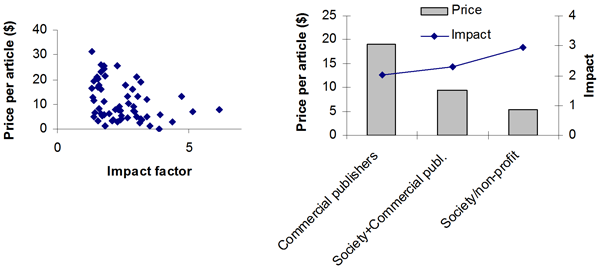During my flyfishing vacation last year, pretty much nothing was happening on this blog. Now that I’ve migrated the blog to WordPress, I can actually schedule posts to appear when in fact I’m not even at the computer. I’m using this functionality to re-blog a few posts from the archives during the month of august while I’m away. This post is from March 29, 2012:
My former supervisor (in 1993!) Göran Englund may not be a Field’s Medalist (he’s an ecologist!), but already in 2003, he saw corporate publishers behaving in the same way which gave rise to the Elsevier boycott this year, almost ten years later: extorting university libraries with overpriced journals. Back then, he calculated a “blacklist” of journals, ranked by subscription price per article in his field of ecology. Interestingly, the bottom of this list is populated by the high-ranking society and non-profit journals, while the expensive spots are occupied by the lower-ranking, overpriced journals of corporate publishers. Unfortunately, he never published his analysis, but after a phone-conversation initiated for an entirely different reason today, he sent me his blacklist. Here’s what he said about it nine years ago:
The crisis in academic publishing
- The market is dysfunctional – there is no mechanism regulating journal prices.
- Prices of commercially published journals often increase by 10-20% per year
- In ecology the average prices of commercially published journals are four times higher than those published by non-profit organizations.
- Libraries cancel subscriptions – Our research is not efficiently disseminated.
- We pay more and get less.
What can be done?
- Examine the pricing policy of any commercially published journal before you contribute as an author, reviewer, or editor. If possible, refuse to do business with publishers who practice “predatory pricing.”
- Submit papers to journals that have reasonable prices.
- As a member of a scholarly association, encourage the creation of competitors to expensive commercial journals.
- Inform your colleagues.
More information on the crisis at: www.createchange.org.
The document also contains one small figure at the end that I thought I should paste in here:

I’ve converted the entire document to PDF for everyone to enjoy. It almost goes without saying: after 2003, Göran never published, reviewed or edited for any of the commercial journals any more.













